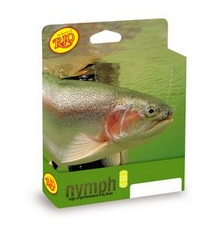 In the last installment we looked at the Scientific Angler and Airflo brands and pointed to similarities of taper and how advertising didn’t always correspond to the line’s attributes. Without a standard we suggested every change to a fly line could be spun into a benefit, and how advertising artfully avoids using the same superlatives to describe features and capability.
In the last installment we looked at the Scientific Angler and Airflo brands and pointed to similarities of taper and how advertising didn’t always correspond to the line’s attributes. Without a standard we suggested every change to a fly line could be spun into a benefit, and how advertising artfully avoids using the same superlatives to describe features and capability.
Admittedly our research is simplistic; discarding color, texture, slickness, and softness, and most of the hype to focus on taper alone. Taper is responsible for the feel of a line in flight, and that’s something each of us is expert in, it’s something we’ve practiced for years.
We’re hoping that all the Excedrin Migraine we swallowed building the charts will be useful going forward. Knowing your manufacturer and his tendencies can assist in making an informed purchase.
Of the “Big Four” manufacturers only RIO and Cortland remain. We’ve cataloged their tapers and noted some examples of their practices below:
RIO

RIO doesn’t reinvent the wheel as much as SA and Airflo, it takes proven and popular tapers adds new boxes and artwork and labels them as new lines – often species specific, or topology related.
The RIO Carp is identical to their Mainstream Floater, the Mainstream Saltwater has an identical taper to their Mainstream Bass/Pike/Panfish, and if you snip 3″ off the tip of a RIO Striped Bass, it’s a RIO Clouser – only about $10 cheaper.
The RIO Lake and RIO Classic share an identical taper, but the Lake is an intermediate sink fly line, which is a marked difference.
The RIO website has the following for the CARP line:
Designed for the carp fly fisher, this weight forward fly line combines a medium length head with a smooth front taper for a subtle presentation. Wary carp will not be spooked by either the presentation, or the camo olive color. The slick XS Technology coating, over a braided multifilament core ensures easy and confident casts.
… and for it’s twin, the Mainstream Floater:
Designed to optimize rod performance at normal casting ranges with shorter heads, tapers and running lines that empower novice casters to make the cast. MainStream lines undergo the same rigorous production processes and quality control standards as all RIO products. The MainStream floating lines have a supple self-lubricating coating that remains memory-free in cold water.
The advertisements are different, no mention of “smooth front taper” on the MainStream, and they didn’t claim Carp fishermen are novice casters, which was a selling point of the MainStream. “Memory free in cold water?” – is that better or worse than XS Technology?
The RIO CARP retails for $69.95 and the Mainstream floater for $39.95, which is a significant hit despite the XS technology. Is the same taper worth the extra dollars?
You be the judge.
If we look at forward tapers, as we did with SA and Airflo, RIO has 7 lines with forward tapers in excess of 7 feet. If the practice we’ve seen with SA and Airflo holds true we would expect the Selective Trout II to tout its long tip as that’s the “money” superlative to use; fine tip = soft presentation = selective trout.
The Indicator:
MainStream® Indicator Fly Line • NEW for 2009 With a short front taper and a front loaded head, this line is designed for casting big indicators and heavier flies, and does so with ease. The line is built on a supple braided multifilament core and has a self-lubricating coating that remains memory-free in cold water.
Huh? Short Front Taper? A delicate tip would be worse at turning over large flies as it lacks the mass of a heavier line. The front 7′ of the belly of the line is what they’re trying to suggest as the weight forward, it’ll have to transition its energy into the decreasing diameter of the 8′ forward taper otherwise it’s a mess when it lands.
The RIO Grand:
The RIO Grand is one half size heavier and features more weight distributed towards the front of the line to easily load fast action fly rods. AgentX Technology gives the RIO Grand maximum floatation and the XS Technology produces a wonderfully slick finish for easy distance. The line remains supple in coldwater conditions and is ultra smooth for maximum casting distance. The Super Floatation Tip™ has a welded loop for changing leaders. Tests prove that when you land a fish, the loop slides through the rod guides more easily than the customary nail knot.
No mention of the longer front taper, but has “Agent X” as a wildcard to feel safer about the purchase. “One half size heavier” means the line is AFTMA #7.5, and it’s likely a thicker diameter throughout the taper. We’ll have to take their word on it because a long front taper doesn’t concentrate the weight towards the front of the line, that’s an attribute of a short front taper.
The Selective Trout II:
One of the softest, memory-free fly lines made. A unique manufacturing process enables this line to have a relaxed off-the-reel feel yet the harder outer coating ensures the highest casting performance and durability. The Selective Trout II line is for discerning anglers and technical fishing situations where the long, fine front taper provide the softest of presentations. This line is the best for bamboo and traditional action trout rods. RIO has slightly increased the diameter behind the front taper of the double taper for easy turnover of long leaders. The AgentX coating makes these high floating lines incredibly easy to lift quietly off the water, while the XS Technology results in a very smooth and slick finish.
Predictable isn’t it? Here’s our mention of the benefits of a long front taper and how it assists a gentle presentation. Note how “soft” is immediately diffused by “hard outer coating” and durability is no longer in question.
There’s little question that the marketing is genius – and fascinating how each line contains attributes that are selectively ignored or pronounced ensuring each line is marketed to a unique niche. This style is constant among all line manufacturers – and is required to ensure we’re lining up for more spools and the lines to go on them.
Real genius is touting a long front taper as good, and not having to explain why a short front taper isn’t bad.
In my mind RIO takes it past the line of good taste however. I give high marks to its authors, their prose is deft, subtle, and you can’t argue with any of it. Claiming the delicate tip will assist in turning over large flies and a longer front taper is “more weight forward,” isn’t consistent with physics. The belly of the line is not part of the forward taper, and RIO blurs that distinction.
SA and Cortland were both effusive and elusive about their products, but they didn’t require a 4th dimension or a rift in the space-time continuum to validate their assertions.
CORTLAND

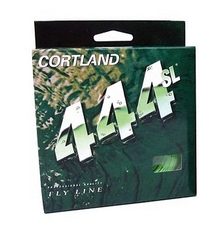 Cortland appears to have made a concious decision to simplify everything but the box art. It’s as if their strategy is, “We’ll make a taper that we like and use it on everything, if you like the feel of how a Cortland casts, then you’ll like all our lines.”
Cortland appears to have made a concious decision to simplify everything but the box art. It’s as if their strategy is, “We’ll make a taper that we like and use it on everything, if you like the feel of how a Cortland casts, then you’ll like all our lines.”
I can’t argue with the logic as it’s sound. It could also be indicative of a company attempting to keep pace with others and ill prepared for the specialization wave. It’s a reasonable explanation but it’s entirely conjecture on my part.
Cortland makes many lines but very few distinct tapers. Like Airflo they like a full foot of level line at the tip, and prefer 90′ and 105′ lines, and are betting on one of two things; either their coatings and textures are so much better than everyone else, or you won’t look at the above chart and realize they only make 2-3 different lines.
The chart speaks volumes, and suggests you’d be best served looking at price. Despite the box art, the line hasn’t had its taper tuned to match the advertised quarry or conditions, and with so little variance in taper the real difference is what you pay.
The SYLK and Classic Clear Creek have an uncommon amount of level tip and should be noted as such, let’s take a look at the marketing:
444 Classic Sylk is the first modern line designed specifically for fine bamboo and rods. The “Sylk” replicates the fine diameter, long taper, supple feel and subtle color of natural silk, but in a modern, easy to care for fly line. But, the “Sylk” isn’t just for bamboo! If you are one of the many anglers who have rediscovered the delights of fiberglass fly rods, this line is for you! It even works well on graphite for the finest presentations under the most demanding low water conditions. Can you say “midges?”
… and the Classic Clear Creek:
Whether you’re on the legendary creeks of Paradise Valley, the Chalk Streams of Hampshire, or in the Limestone country of Pennsylvania, spring creeks (and tail waters!) present special challenges. The extra long, supple tip of the Clear Creek helps put the body of the line further from the target, resulting in a softer, more precise delivery of the fly. The mute olive color blends into both bank-side and aquatic vegetation. And our cold-water formulation remains coil free in any condition. 444 Clear Creek, the choice of spring creek experts!
No mention of the 400% longer tip on the SYLK (as compared to SA or RIO), which is being marketed to the bamboo crowd, that “extra long supple tip” is reserved for their technical offering, the Clear Creek.
Artfully chosen verbiage ensures no two lines appear the same in print, regardless of their physical properties.
Summary:
Fly line manufacturers are playing a game of words with us consumers. That’s not terribly surprising, but inclusion and omission requires us to do our homework before assuming anything about a fly line.
It doesn’t appear that a Bonefish line is required to catch a Bonefish, and you may have known that instinctively – but the new fly fisherman who’s looking to fly shop staff and magazines to make decisions doesn’t.
Advertising copy used by fly line makers are slicker than their line coatings. Features they tout on the box are shared by other lines in their product suite, many of their tapers are similar, and there’s no standard to judge words like; longer, shorter, and slicker.
A desirable feature is touted by the maker, its opposite is present on another line – where it too is an asset, and all we’re supposed to acknowledge is “it’s all Good.”
Fly lines are limited in their physical properties by the AFTMA standard. Weight (taper) is either pushed forward on the line or pulled rearward, with predictable consequences. Skagit lines and shooting heads are “all the weight stuffed forward” – and there’s no parallel for everything pushed to the rear other than … kite string.
Our research for these articles is inherently flawed. We’ve ignored all qualities of fly lines other than their taper, but taper is the entire feel of a line in flight and quite possibly the most important portion of any cast. Manufacturers toss us buzzwords; “Agent X”, “hydrophobic”, and “repeating geometric micro patterns” and like fish we swallow the bait whole.
Not all technical breakthroughs are worthy, and it’s up to us to determine what really works, what we really like, and to reward those firms that consistently produce superior quality in addition to superior ad copy.
Note: As an added bonus you can use the charts above to quickly determine who is repackaging another vendor’s lines. While the colors may change, the tapers should remain the same.

 I just can’t seem to leave well enough alone. Dogged determinism has me squinting at the screen digesting numbers and errata when I should be mowing lawn or squinting at a small fly going in harm’s way.
I just can’t seem to leave well enough alone. Dogged determinism has me squinting at the screen digesting numbers and errata when I should be mowing lawn or squinting at a small fly going in harm’s way.
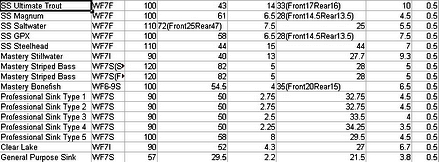

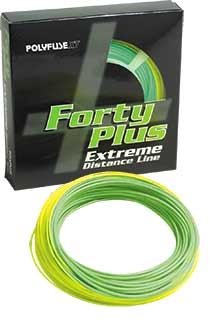 Airflo has a much smaller stable of fly lines than Scientific Angler, and like SA they’re showing the same advertising tendencies. Both Airflo and Cortland include a full foot of level taper at the tip, unlike RIO and SA which opted for 6″.
Airflo has a much smaller stable of fly lines than Scientific Angler, and like SA they’re showing the same advertising tendencies. Both Airflo and Cortland include a full foot of level taper at the tip, unlike RIO and SA which opted for 6″.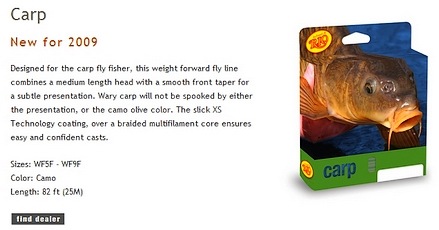
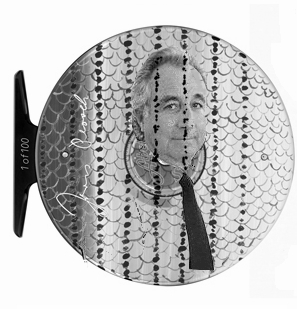
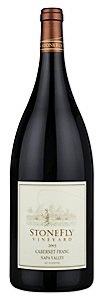 You too can enjoy the official vineyard of the Federation of Fly Fishermen.
You too can enjoy the official vineyard of the Federation of Fly Fishermen.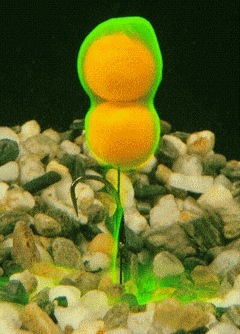 While the rest of you debate whether it adheres to the spirit of things I’ll be quietly mixing it into my head cement. I’m preprogrammed to break ranks with the crowd at the first opportunity, exploit fish horribly, then asks forgiveness in a cataclysm of guilt.
While the rest of you debate whether it adheres to the spirit of things I’ll be quietly mixing it into my head cement. I’m preprogrammed to break ranks with the crowd at the first opportunity, exploit fish horribly, then asks forgiveness in a cataclysm of guilt.
 It might be the perfect campsite companion, she cuts off your air supply wrapping the GPS waterproof cell phone around your neck, and can reel you in when dinner’s ready.
It might be the perfect campsite companion, she cuts off your air supply wrapping the GPS waterproof cell phone around your neck, and can reel you in when dinner’s ready.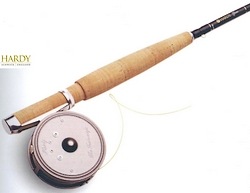 Not to be outdone by the Retro Movement, the venerable Hardy and Grey’s dips its toe in the fiberglass market along with Sage.
Not to be outdone by the Retro Movement, the venerable Hardy and Grey’s dips its toe in the fiberglass market along with Sage. The “system” word always scares hell out of me. I’ve always assumed it’s the rugged individualist that gets squeamish at the thought of tailoring his fishing to someone else’s system; it doesn’t mean it’s bad – we just know our opportunity for freestyle points evaporates.
The “system” word always scares hell out of me. I’ve always assumed it’s the rugged individualist that gets squeamish at the thought of tailoring his fishing to someone else’s system; it doesn’t mean it’s bad – we just know our opportunity for freestyle points evaporates.